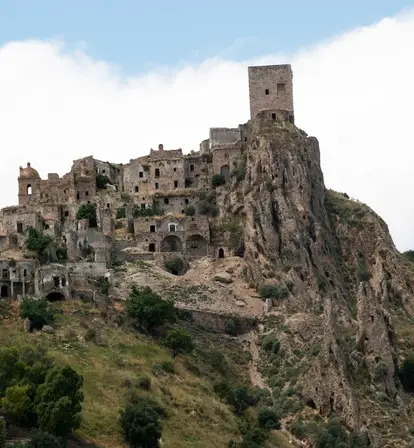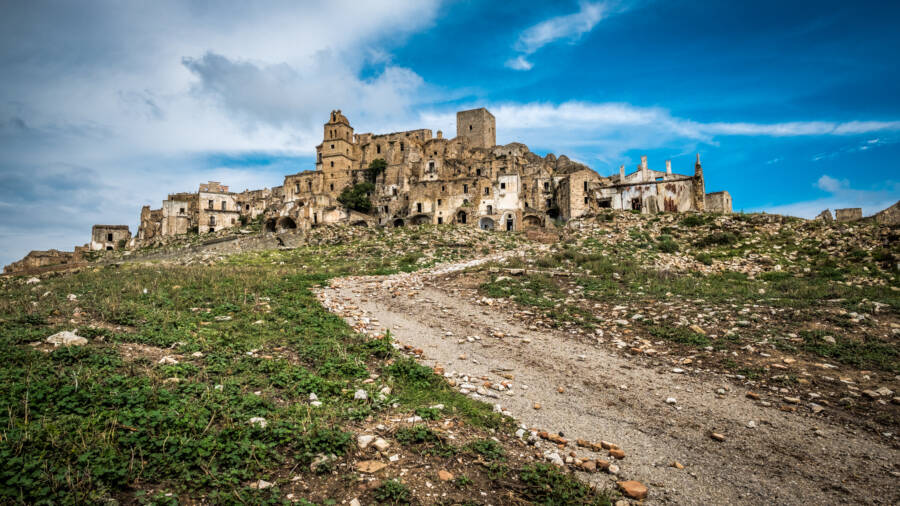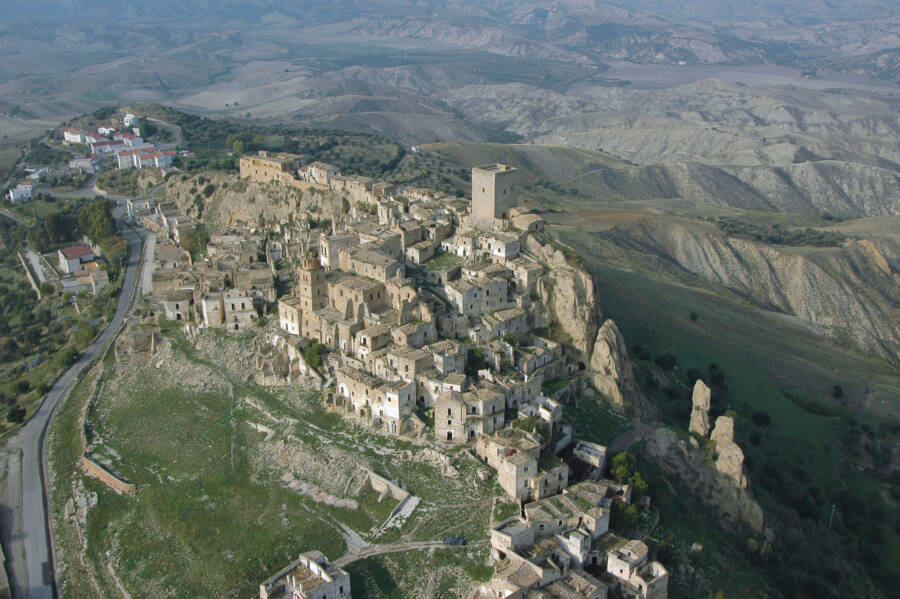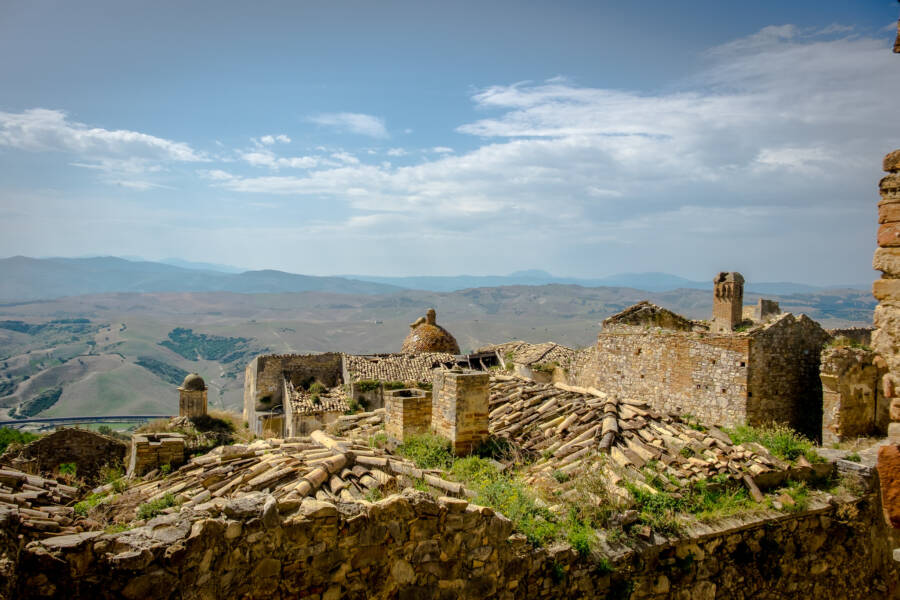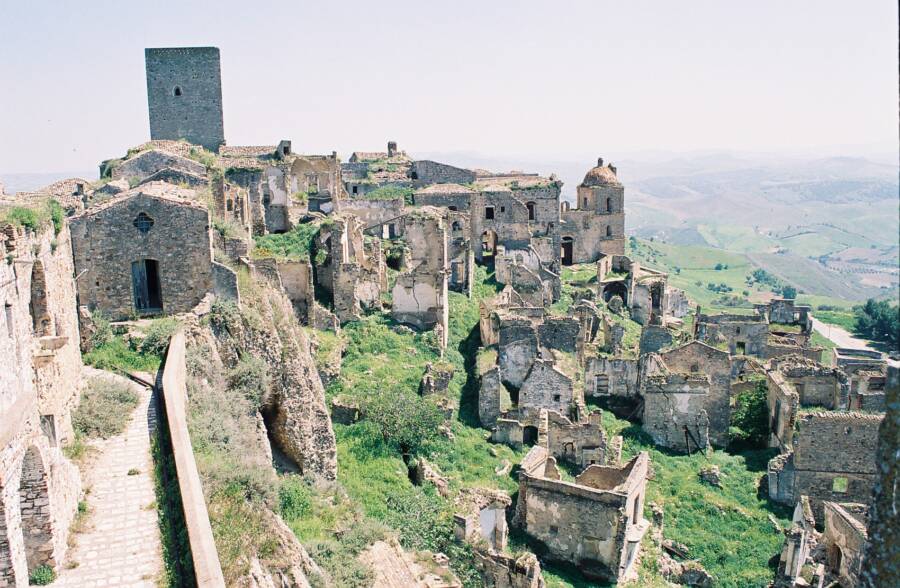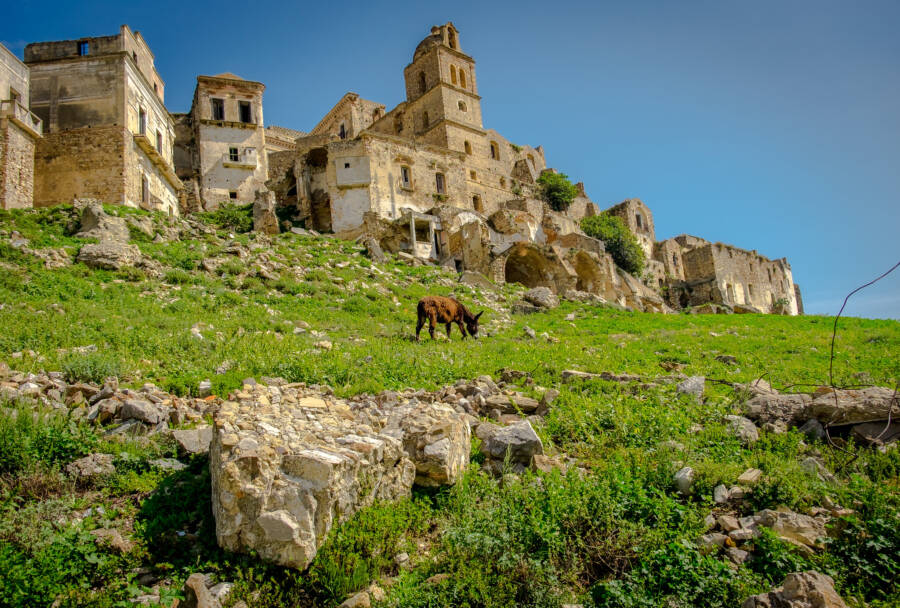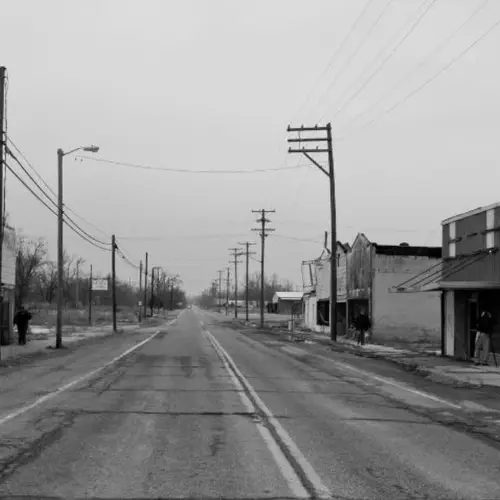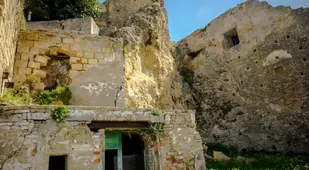An abandoned village brought down by natural disasters and the Plague, Craco is still hauntingly alive with history.
Even though the residents of Craco, Italy are long gone, the majesty of this medieval hill town remains. Located in the instep of Italy's boot, the once-thriving village stands atop a 1,300-foot cliff overlooking the river valley below.
Defensively, the town's builders got everything right; but enemy attacks were not the cause of Craco's demise.
In fact, the plucky village survived several occupations, plunderers, and some substantial drama brought on by the Unification of Italy. Then the Black Death arrived in the mid-1600s, taking out hundreds of residents. Yet Craco by and large survived; by 1815, it was even big enough to divide into two districts.
Regardless of its strengths, Craco found itself in a Catch-22 regarding its location. While its perch atop a hill kept marauders at bay, exposure to the elements is what effectively brought down the village. Earthquakes, landslides, floods; once residents began evacuating because of these natural disasters, things were never quite the same.
Now Craco is effectively a ghost town, reduced to nothing but ancient ruins for half a century.
It's comforting that the grand architecture still keeps diligent watch over Craco, despite the fact that the its only invaders these days are curious tourists and festival attendees.
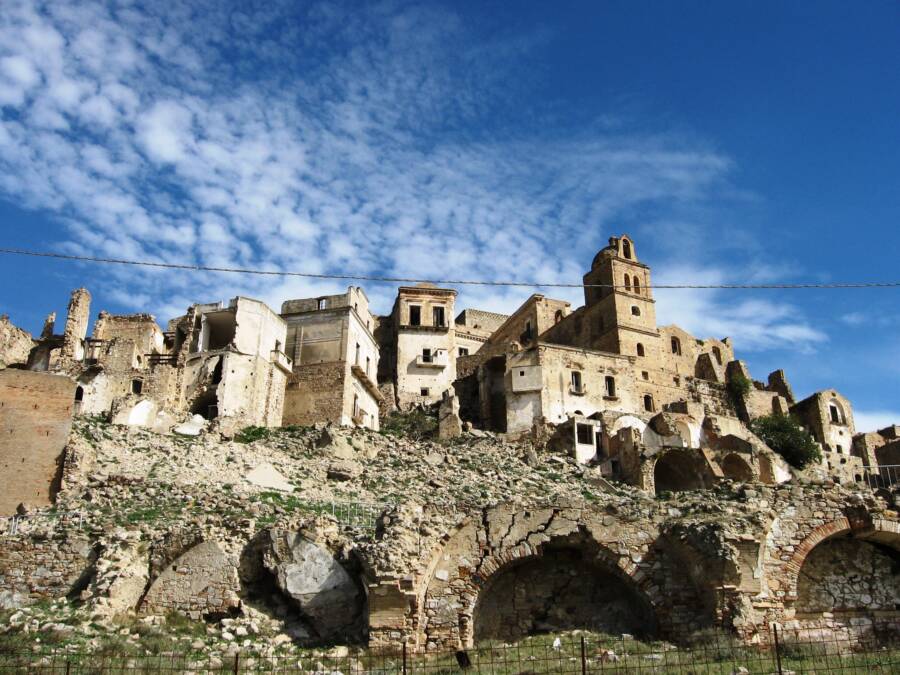
Michela R./Flickr Hilltop village of Craco, Italy.
Craco: The Italian Village's Rise And Fall
Archaeological evidence suggests humans have lived in Craco since at least the eighth century B.C. Greek monks are believed to have settled there as well after moving inland from the southern coast.
Legend has it that the town was called Monte D'Oro, or "mountain of gold," but in reality it was probably called Grachium, the Latin word for "plowed field."
The first written evidence of the town's existence shows that it was under the possession of a bishop named Arnaldo in 1060 A.D. The town's oldest building, the tall Torre Normanna, predates the bishop's documented ownership by 20 years.
From 1154 to 1168, after the archbishop, the nobleman Eberto controlled the town, establishing Feudalistic rule, and then ownership passed onto Roberto di Pietrapertos in 1179.
A university was established in the 13th century and the population kept growing, reaching 2,590 in the year 1561. By this time, the construction of four large plazas was completed. Craco had its first substantial landslide in 1600, but life went on, and the monastery of St. Peter went up in 1630.
Then, another tragedy hit. In 1656, the Black Death began to spread. Hundreds died and the population dipped.
But Craco wasn't down for the count quite yet. In 1799, the town successfully overthrew the feudal system — only to then fall to Napoleonic occupation. In 1815, a still-growing Craco divided into two separate districts.
After Italy's unification in the mid-19th century, the controversial gangster and folk hero Carmine Crocco briefly conquered the village.
Natural Disasters
Mother Nature had more in store for Craco. Poor agricultural conditions caused a severe famine in the late 19th century. This spawned a mass migration of the population — about 1,300 people — to North America.
Then came more landslides. Craco had a series of them — plus a flood in 1972 and an earthquake in 1980. Luckily, in 1963, the remaining 1,800 inhabitants were transferred down the mountain to a valley called Craco Peschiera.
Not everyone was willing to move, however. One man native to the tiny town resisted the relocation, choosing to live the rest of his more than 100 years in his native land.

Giuseppe Milo/Flickr
Craco Today
In 2007, the descendants of the immigrants of Craco in the U.S. formed The Craco Society. Their website memorializes the village, saying, "Although 'Craco Vecchio' is no longer inhabited, it remains robust in the minds and hearts of the Crachese people everywhere."
Craco began caving in near the millennium. Buildings in the old town are either collapsed or on the verge of collapse. One of the first monuments to crumble was a World War I statue, inaugurated in 1932.
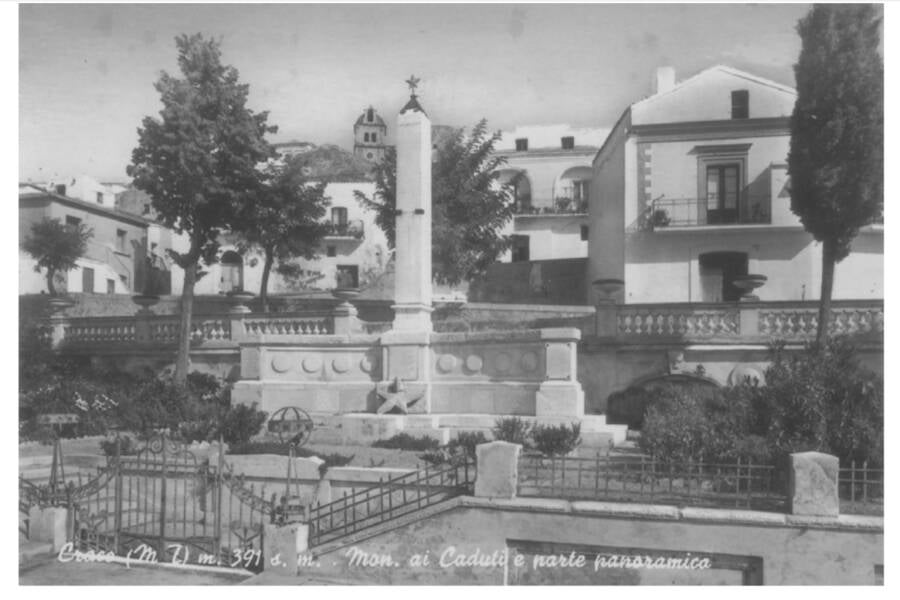
The Craco SocietyCraco's World War I monument, which has since fallen.
Even though Craco is eerily uninhabited, it springs back to life during the religious festivals held there every year. These festivals mainly pay homage to the Virgin Mary (an ancient statue of her was discovered in nearby waters) and San Vincenzo - the martyred patron saint of the town.
Hollywood occasionally features Craco's crumbling ruins in some films. They provided the backdrop for scenes of the 2004 movie The Passion of The Christ and the James Bond flick Quantum of Solace in 2008.
The film crews had to have been pretty small, however, as no more than 35 people are allowed in the city at once. Such limits are necessary to preserve the medieval town's stark beauty.
After learning about Italy's medieval ghost town of Craco, read up on the Turkish ghost town, Burj Al Babas. Then, learn about the gruesome job description of a medieval plague doctor.
